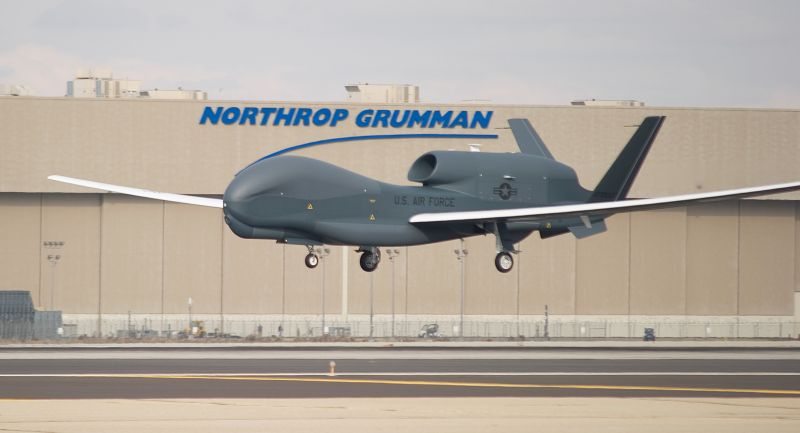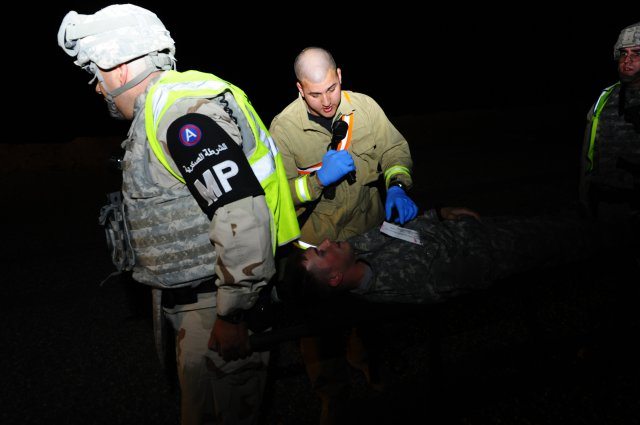More than 6,000 experts from 30 countries will be gathering here Aug. 16-19 for this year’s largest robot and unmanned systems show.
Hosted by the Association for Unmanned Vehicle Systems International, called AUVSI, Unmanned Systems North America 2011 will feature workshops, panels and demonstrations of robots used by the military services, civil and law enforcement agencies and the commercial sector.
“Robots are key — we’ve seen this throughout the military and first responder operations over the last decade in particular — to extending the distance between operators and the dangerous environments in which they operate,” said Charlie Dean, director of business development in the Unmanned Systems Group of Qinetiq North America.
Dean, a retired Army lieutenant colonel and paratrooper with combat deployments to Iraq and Afghanistan, said a revolution is occurring today in automated systems for use in the air, on the ground and on and under the sea.
“The alternative to using unmanned systems,” he said, “is human exposure.”
More than 3,000 of Qinetiq North America’s Talon robots have been deployed in Iraq and Afghanistan, mainly to deal with improvised explosive devices and roadside bombs, according to the British global defense technology company.
Qinetiq is one of more than 450 exhibitors who will demonstrate automated systems and other products at the conference.
Another is iRobot Corp., a Massachusetts advanced-technology company whose ground and marine robots — including PackBot, Ranger, Warrior, Seaglider and others — are supporting the Army and other military services.
David Hines, vice president of the iRobot Maritime Division, said iRobot deployed Seaglider, its underwater robot, during the three-month-long 2010 Deepwater Horizon oil spill.
Seaglider offered a way to track oil plumes below the surface of the Gulf of Mexico and operated in the water for 90 days, the retired Marine Corps major general added.
At Japan’s request, iRobot was one of several U.S. and international companies that deployed robots into the Fukushima Daiichi Nuclear Power Plant soon after Japan’s deadly earthquake and tsunami in March.
The company sent two 30-pound and two 300-pound robots to the station site within a week of the disaster, Hines said, along with six employees who went to assemble the robots and train Japanese operators.
The robots, he added, equipped with strap-on radiation sensors, were the first robots into the reactor cell and provided first access to Unit 1.
“On June 6 we provided the first indications going into Unit 1 of radiation levels (the robots) were seeing due to steam uprisings,” Hines said.
“We saw radiation levels of over 4,000 microsieverts,” he added, and later saw higher readings.
“To put that into perspective,” Hines said, “4,000 microsieverts for human beings means death in 90 minutes.”
The robots, he added, are still at work today in the power plant.
Also at work in war zones, over national borders and in disaster areas are unmanned aircraft like the MQ-1 Predator and the Northrop Grumman-built RQ-4 Global Hawk.
John Priddy, director of the U.S. Customs and Border Protection’s National Air Security Operations Center in Grand Forks, N.D., said his organization operates two MQ-9 Predators.
“More specifically,” he added, “we have seven MQ-9s operating in U.S. Customs and Border Protection and shortly we should have nine.”
They’ve used the unmanned aircraft primarily for law enforcement purposes, Priddy said, “but residing within the Department of Homeland Security, we have had reason to apply the technologies toward disaster relief and civil support operations,” including California wildfires.
The Global Hawk is being used in Afghanistan but it also has been used in disaster-relief efforts like the January 2010 earthquake in Haiti and in Japan.
“The Global Hawk is a high-altitude, long-endurance asset, so it’s an unmanned system,” said Air Force Lt. Col. Rick Thomas, the functional manager for the $13 billion Air Force Global Hawk program.
“In the Air Force we call it an RPA, a remotely piloted vehicle … and (in Japan) it was the best one to satisfy those persistent, dynamic imagery requirements,” Thomas said.
The Global Hawk flew from Guam to Japan, he added, where it “parked” over the stricken area for up to 20 hours at a time, being retasked as new requirements became evident.
The Global Hawk responded to the Japanese disaster a month earlier than it had been intended to operate, Thomas said.
In an “incredible effort,” he said, the team had to fix communications, find people to look at all the imagery, determine priorities for tasking amid simultaneous requests from 31 agencies and the office of President Barack Obama, and schedule the remotely piloted vehicle.
During its time in Japan, Thomas said, the Global Hawk flew 20 missions and more than 500 hours, producing thousands of images.











